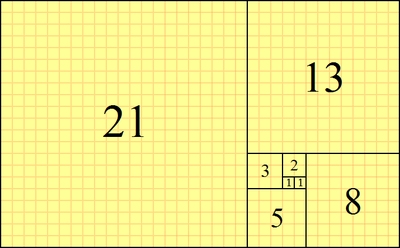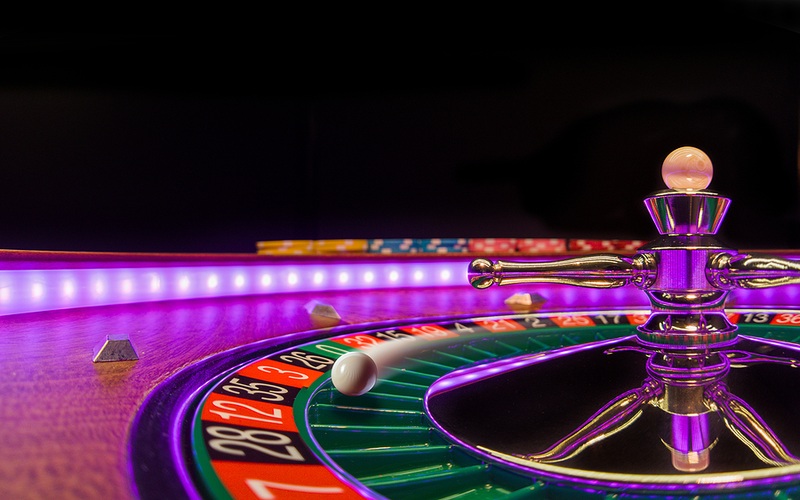
克勞棣, CC BY-SA 4.0, via Wikimedia Commons
The Fibonacci numbers were not created specifically for roulette, but they have been used to create a betting system that is designed to help players manage their bankroll and recoup losses quickly.
A man named Leonardo Pisano Bigollo is credited with coming up with the sequence, although everyone called him by his nickname, Fibonacci. In actual fact, there is evidence that the sequence was known about in India hundreds of years before Fibonacci was even born (in 1170), but we are getting off the point.
Back to the system.
Like almost all other systems, this one is designed to be used on even money bets only, so red/black, even/odd, high/low.
Less aggressive than the Martingale and arguably more complicated than the Labouchere, it requires a pretty good head for numbers, although you don’t need to be a maths genius. There is just a lot of number tracking going on.
It is another negative progression system since the player has to increase their bet after a loss, and reduce it after a win.
How Does the Fibonacci System Work in Roulette?

The Fibonacci sequence is nice and easy to understand.
It follows the rule that the next number should be the sum of the previous two; so if the last two numbers in the sequence were 2 and 3, the next number would be 5, then 8, then 13, and so on.
Starting from zero, it looks like this:
- 0, 1 , 1, 2, 3, 5, 8, 13, 21, 34, 55, 89, 144, 233, 377 etc.
The sequence is infinite, and you can see how quickly the numbers climb from a very slow start.
Gamblers began applying this system to roulette by using it to dictate their stake amount depending on the result of the last spin.
Like all other systems, you need to break your bankroll into betting units to do this effectively, and for the purposes of this article we will be using £1 per betting unit, with a bankroll of £100. So we have 100 betting units, but if you had a £200 bankroll for example, you could use £2 per unit and still be playing with 100 betting units.
That said, for this roulette system it’s advisable to have a larger number of betting units as you will see.
Fibonacci Roulette System Example
 When using this system, after a loss your next bet should follow the sequence and be the sum of your previous two bets. At the beginning of the sequence this would mean two initial bets of 1 unit assuming those bets were both losers.
When using this system, after a loss your next bet should follow the sequence and be the sum of your previous two bets. At the beginning of the sequence this would mean two initial bets of 1 unit assuming those bets were both losers.
If your bet wins, then you jump back two places in the sequence to determine your stake on the next spin. At the beginning of the sequence, a winning bet just resets the sequence. Any time you get back to the start, this can be thought of as a successful sequence.
Here it is in table form to make things clearer:
*£1 per betting unit, bankroll of £100.
| Bet | Stake | Result | £ Lost/Won | Bankroll Remaining |
|---|---|---|---|---|
| Bet 1 | £1 | Win | +£1 | £101 |
| Bet 2 | £1 | Lose | -£1 | £100 |
| Bet 3 | £1 | Lose | -£1 | £99 |
| Bet 4 | £2 | Lose | -£2 | £97 |
| Bet 5 | £3 | Lose | -£3 | £94 |
| Bet 6 | £5 | Lose | -£5 | £89 |
| Bet 7 | £8 | Lose | -£8 | £81 |
| Bet 8 | £13 | Win | +£13 | £94 |
| Bet 9 | £5 | Win | +£5 | £99 |
| Bet 10 | £2 | Win | +£2 | £101 |
So this was a successful, albeit fairly long, sequence.
Over ten bets we had 4 wins and 6 losses but still came out ahead by 1 betting unit (£1 in our case).
On the one hand it’s very clever that the system allows you to profit despite losing more often than you win, and it is a good way to protect your bank roll over the long term, although it is a lot of effort to make 1 units worth of profit.
Even this minor profit depends on you not running into a losing streak that lasts too long of course.
A losing streak of nine or more would wipe out a 100 unit bankroll as you would only have 12 units left for bet number ten, whereas the sequence dictates you need 55 to cover your losses and get back on track.
In an ideal world, you would never have to go past bet number 6 or 7 to get back to the beginning of the sequence and make it a success, growing your bankroll incrementally.
We don’t live in an ideal world though, and it only takes one bad run to wipe out hours worth of slow and steady profits.
Questions About the Fibonacci Roulette System
Does the Fibonacci System Work for Roulette?
Ultimately the answer is no, because you will inevitably run into a losing streak that wipes you out eventually, if you don’t hit the upper table limit first.
However, it does work in theory so long as you can keep going indefinitely.
Perhaps it’s best to say that it can work in the short term if luck is on your side, but if you push it too far you will go broke.
Can you Adapt the Fibonacci System?
You can do whatever you like, but mathematically there is nothing you can do to make it more effective.
You could set yourself a maximum loss rule in order to break any long losing streaks though.
You might decide to never push it past a bet of 5 units, for example, which would mean that if you lost five bets in a row you would take the loss and start the sequence again.
This would save you from quickly spiralling losses and give your bankroll longevity, but you would be banking on the wheel to never let you down more than 5 times in a row if you were to walk away in profit.
This approach would cost 12 units overall if everything went against you (1+1+2+3+5), so you would need to complete the sequence successfully 12 more times with no more than 5 losses in a row to claw back those 12 units.
Is the Fibonacci System Against the Casino Rules?
No.
Unlike blackjack, advantage play isn’t really possible in roulette as the odds never change – they are weighted against you regardless of what you do.
So no matter what system you want to use, it will only be blind luck if you end up ahead, and even then it counts on you walking away while you are ahead for the casino to make a real loss rather than a paper one.
That means the casino can’t lose in the long term unless you actively cheat, but that is another matter.
